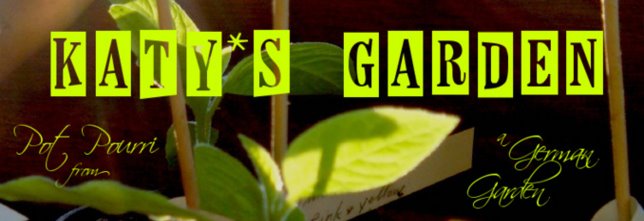
On Sunday a visit to another private garden, a very lovely little thing with countless herbs and a very engaging collection of handmade ceramic creatures and decorations scattered among pots and flowerbeds. The owner of the garden herself makes these, and they seem to really belong in the place, integrating with a vibrant grace that garden art very seldom achieves.
Some plants that really caught my attention are the beautiful, absolutely unforgettable, modest Tagetes tenuifolia "Orange Gem". Unforgettable and modest? Is that really a contraddiction? It shouldn't. More and more I come to appreciate "modest" plants in the border. Perhaps because I alway ignored them and I am now really seeing their importance. But "Orange Gem" is a brilliant little plant, in all senses. As a tagetes it should have a long flowering period, the flowers are very small, though, and simple, not the terrible overblown pompoms that beddding tagetes are mostly carrying nowadays. And they are numerous, a mantle of fire sparks over the fine, dark, thread like foliage. And the scent... of course all tagetes are scented, but it is a fact that most of them smell of old pharmacy. This one is lovely, spicy and citrusy, and while all tagestes are theoretically edible, this is the only one that ever made me consider tasting it at all (which I didn't, I behaved). Chiltern offers the seeds, and it comesin several colour strains, including "Lemon Gem" and "Tangerine Gem". Definitely in my next year list.
Another plant that stirred my curiosity is Tulbaghia violacea, or garlic plant, which may be remiscent of chives in general habit, use and colouring, but is definitely more fetching in appearance.
Finally another very interesting herb is Stevia rebaudiana, or Sweet leaf, a herb considerably sweeter than sugar, and theoretically of real interest for diabetic people. It is not available in Europe for food use, and only allowed for garden decoration (for which purpose it is actually rather unspectacular) . Modern studies denies the old bad rumours about the secondary health effects brought about by the use of the plant, and it would seem that the opposition to its introduction is of merely commercial origin. A pity. For my part, I will suggest to my diabetic mother to look it up, and give it some thought. The fresh leaf is astonishingly sweet, with a very thin aftertaste of liquorice, that may or may not be disturbing in the kitchen depending on the use. Wikipedia has a fine entry about the plant.


No comments:
Post a Comment